Generative Engine Optimization (GEO)

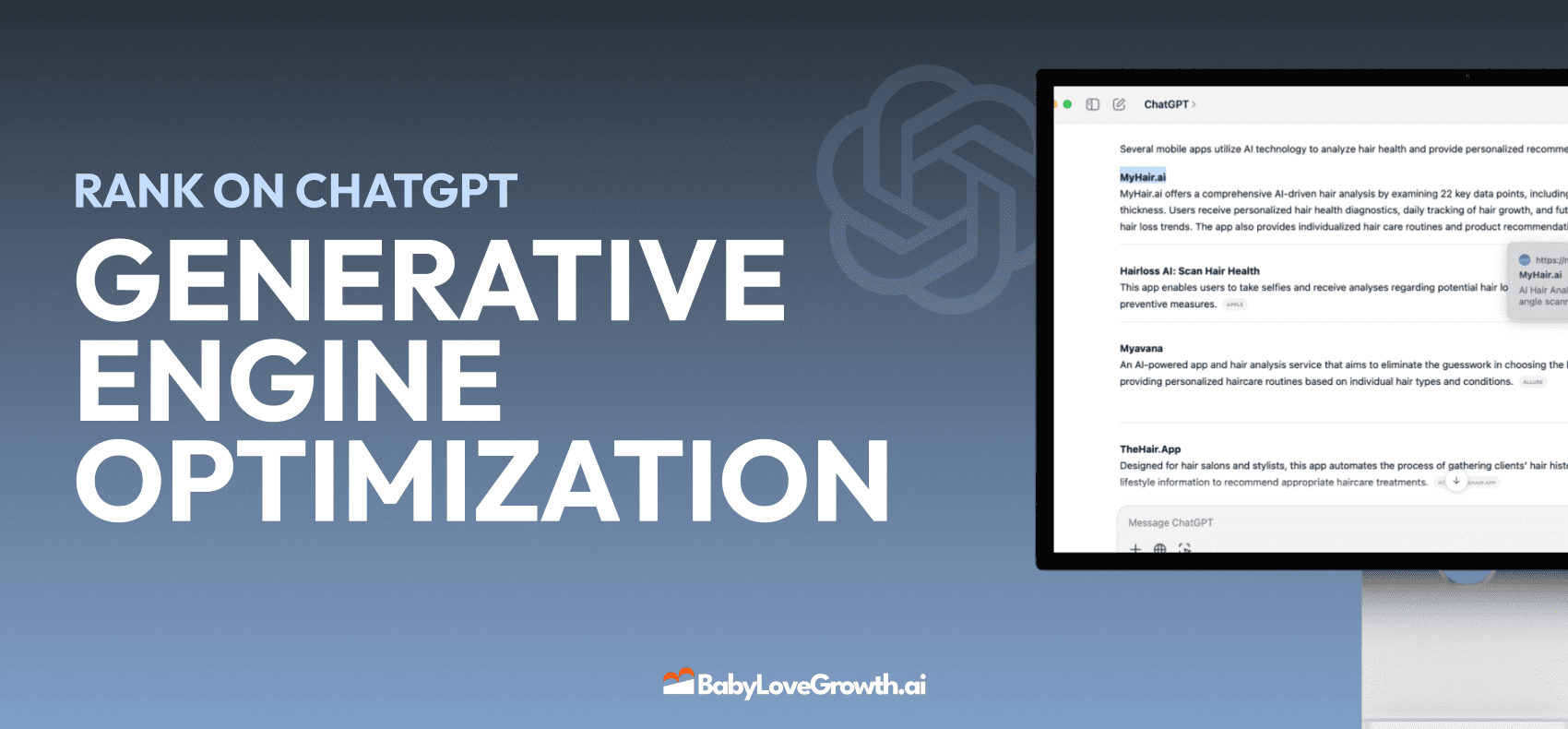
What is Generative Engine Optimization (GEO)?
Generative Engine Optimization (GEO) is about making your content friendly for AI search engines so they can find, understand, and suggest your brand. Think of it as SEO but for AI tools. When someone asks an AI like ChatGPT or Google's AI search about products in your field, GEO helps make sure your business gets mentioned. While regular SEO focuses on ranking high in Google search results, GEO aims to get AI systems to cite your brand as a trusted source. This matters because AI search is growing fast - ChatGPT alone handles more than 10 million questions daily, even more than Bing. For businesses today, GEO is becoming essential. If AI assistants can't find your brand, you'll miss out on many potential customers who use these tools.
Creating content that ranks well on Generative Engine Optimization (GEO) platforms requires an approach that goes beyond traditional SEO tactics. As generative engines become pivotal in providing structured and informative responses to user queries, optimizing your content for these platforms can dramatically increase visibility and engagement.
Example: company MyHair ranking and getting leads from ChatGPT
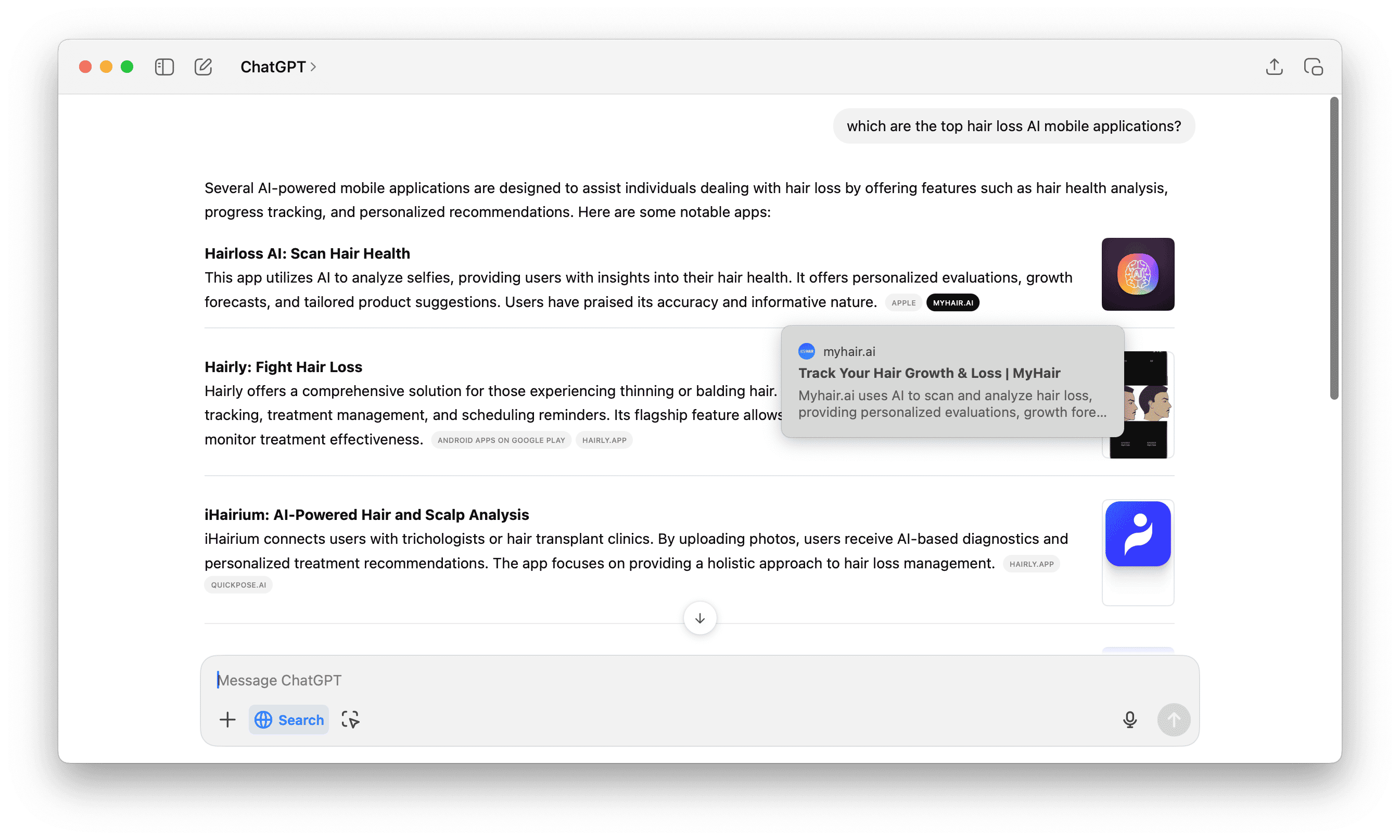
SEO vs. GEO: Whats the difference
SEO (Search Engine Optimization) and GEO (Generative Engine Optimization) both try to make your brand visibile, but they work with different systems. SEO focuses on regular search engines like Google that humans created, while GEO focuses on AI systems that generate answers. This changes how you need to prepare your content.
Here are the main difference:
-
Regular Search vs. AI Search: Old-style search engines show you a list of 10 websites to click on. AI search gives you one answer that combines information from many websites. With SEO, you try to be on that list of websites. With GEO, you try to be mentioned in that one answer. If the AI doesn't use your website as a source, you won't appear in the answer at all.
-
Keywords vs. Context: SEO focuses on keywords - finding what words people search for and using them in your content. But AI search works differently. It doesn't just look for matching words - it understands meaning and natural language. This means repeating keywords many times in your content doesn't work well anymore. For GEO, you need to organize your content so AI can truly understand it. Your content should answer questions clearly and provide facts that AI can easily use when people ask questions. Instead of counting how many times you use a keyword, focus on making sure your content actually answers what people want to know, in a way that's easy for AI to understand.
-
One Page vs. Many Sources: In regular Google search, you might focus on making one page rank first for "best running shoes" and feel successful. But AI tools like ChatGPT create answers by combining information from many websites and sources at once. No single website completely "wins" the question. This means your GEO plan needs more than just one good article. You need to make sure your brand appears in many places across the internet - in product reviews, question forums, Reddit discussions, Wikipedia entries, news articles, and anywhere else AI might look for information. Simply put, having a great website isn't enough anymore - AI systems gather information from many sources, so you need to be visible everywhere.
The main point: SEO is still important, but GEO is now needed too. Think of it like this: SEO helps you show up in Google search results, while GEO helps AI assistants mention your business. This matters because more people are now asking questions to AI chatbots. If you only focus on one and not both, many potential customers won't find you.
Why GEO Is Critical for Businesses
People's online habits are changing quickly, and businesses need to keep up or fall behind. Here's why GEO is so important right now:
-
People are using AI for searches: Millions of people are now asking AI tools like ChatGPT, Bing Chat, and Google's Search Generative Experience (SGE) for help and information. Google thinks its new AI search feature will reach 1 billion users by the end of this year. This isn't just a passing trend - in 2024, ChatGPT had more website visitors than Bing. This shows a big change in how people find information online. If many of your possible customers start using AI assistants instead of regular search engines, you need to make sure your brand shows up when they ask questions.
-
Fewer People Click Links When AI Answers Show Up: New research shows that when AI answers appear in search results, people click on regular links less often. One study of Google's AI search feature found clicks dropped by 18-64% for certain searches. Think about it - you could lose half your Google visitors because they got their answer from an AI box at the top of the page! This is a real problem. If you've worked hard on SEO, AI results could take away much of your traffic. GEO helps you fight this by getting your brand mentioned in those AI answers. This way, even if people don't click your link, they still see your brand name.
-
Only 1 Winner in AI Answers: In normal search, the top result gets about 30% of clicks, the second gets 15%, and so on. But with AI answers, there's usually just one answer combining information from different sources. Your brand is either mentioned or it's not - there's no second page. This creates a big gap between brands that use GEO and those that don't. Companies that start using GEO early will get most of the attention from AI searches. Those who wait will have a hard time getting noticed later, especially after AI systems start to see certain brands as trusted sources.
-
People Want Quick Answers: Today's customers want fast, simple answers when they search online. They don't want to spend time looking through many web pages. Studies show customers are less happy than ever before because they want companies to understand what they need right away. AI search helps with this by giving quick, personalized answers. If your brand shows up in these AI answers with helpful information, customers will trust you more. But if your competitors show up in AI answers and you don't, customers will start to see them as the experts instead of you.
-
Get Ready for the Future: AI search is still new and changing quickly. More companies are adding AI to their websites and apps. Starting GEO now helps protect your business for the future. Think of it like buying insurance - you're making sure your business stays visible as search changes. It's better to stay visible than try to catch up after you've disappeared from searches. Companies that use GEO now will become more familiar to AI systems over time. This gives them a big advantage over companies that wait.
Let's be clear - GEO is much more than just another marketing buzzword. It's happening because the way people search online is changing dramatically. If you ignore GEO, your brand risks becoming invisible to AI search tools. But here's the good news - starting GEO now can help more people find and trust your brand as AI search grows.
Think of it this way: AI search is like having a smart friend who instantly answers questions instead of making you look through lots of websites. GEO helps make sure that when this "friend" answers questions about your industry, they mention your brand as a trusted source.
How to Implement GEO for Your Business
This step-by-step guide delves into effective strategies tailored for GEO, highlighting innovative methods such as quotation addition and statistics inclusion. By integrating precise citations, enhancing readability, and adopting an authoritative tone, companies can enhance their competitive edge. Moreover, the guide underscores the importance of clarity and accessibility, ensuring that technical complexities are translated into user-friendly language.
Whether you're an experienced SEO professional or a newcomer to digital content creation, this guide will equip you with the tools needed to navigate the evolving landscape of AI searches and maximize your content's impact through GEO.
Source of the information is mainly coming from the research paper GEO: Generative Engine Optimization, a collaboration between researchers from Princeton and Seattle universities. Research paper. Also our own findings are included.

Here are 9 actionable steps to get you started on boosting your AI search visibility:
1. Check AI Visibility
Before making improvements, you need to know how AI tools currently show your business. Here's a simple 2-step process:
Step 1: Ask AI About Your Business
- Use AI tools like ChatGPT or Perplexity
- Ask questions like:
- "What are the best [your product] companies?"
- "Compare [your company] vs [competitor]"
- "Tell me about [your company]"
- Try different ways of asking - don't just use your company name
- Write down what the AI says about you

Step 2: Look at Your Competitors
- Notice which companies AI mentions often
- Check where the AI gets information about them:
- Wikipedia pages
- News articles
- Industry websites
- Review sites
By doing that, you will understand what AI knows about you and where your business should be present (where your competitors are mentioned but you aren't)
2. Optimize Your Content for AI Readability
Step 1: Quotation Addition
Impact: +41% visibility improvement
Adds direct quotes from authoritative sources to increase credibility and boost trustworthiness.

Source: Babylovegrowth article
Step 2: Statistics Addition
Impact: +37% visibility improvement
LLMs like to include unique data - research, statistics, study results, survey results etc. - in their results.
Get data from trustworth sources and show it clearly using tables and bullet points. Add details about how the data was collected, who the experts are, and links to sources. This helps AI systems see that your content is unique and accurate.
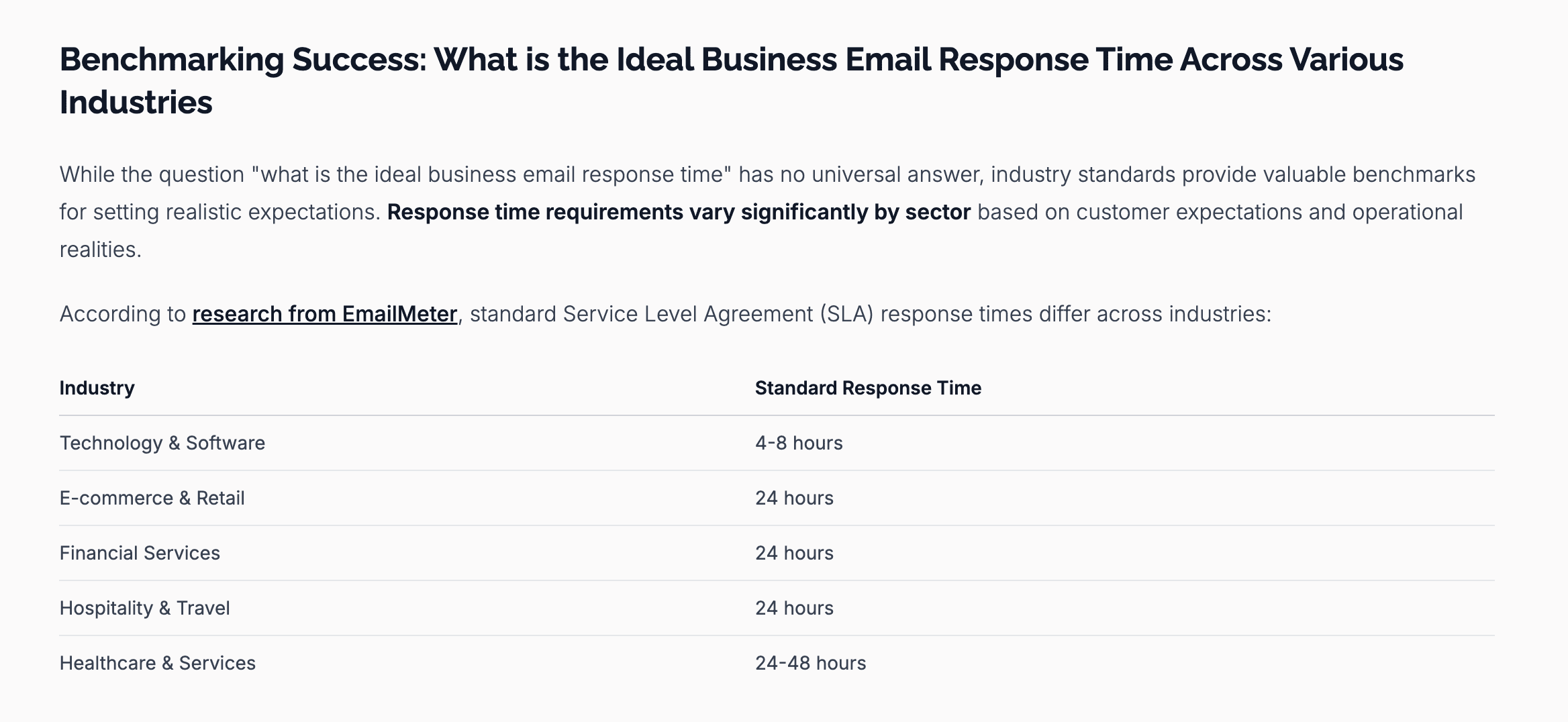
Source: Babylovegrowth article
Step 3: Cite Sources
Impact: +30% visibility improvement
Explicitly references sources in text. Try to cite relevant, up-to-date references (2024, 2025).

Source: Babylovegrowth article
Step 4: Use Technical Terms
Impact: +21% visibility improvement
Use specific technical terminology to demonstrate expertise (when applicable, don't over do it)
Example: Uses specific terms such as "photosynthesis" instead of general phrases like "plant energy process."
Step 5: Easy-to-Understand Language
Impact: +20% visibility improvement
Use simple language. Avoid jargon and complex wording. Make your content accessible to broaded audience.
Example: Instead of using complex financial jargon like "asset-liability mismatch," simply explain it as "when what you owe is more than what you own."
Step 6: Use Clear Structure and Headings
AI models work best when they can find clear answers to questions. Use H2 and H3 headings that ask direct questions or explain topics simply. FAQ-style content works really well - for example, if someone asks "What are the best foods for a healthy breakfast?", the AI can easily find and share your clear answer. Using organized headings and bullet points makes it easier for AI to find the right information.
Step 7: Write in Conversational tone
AI tools learn from question-and-answer content like forums, Reddits and help sites. Write your content like you're having a conversation. For example, instead of writing a blog called "Best Hair Products 2025", create sections that answer common questions like "Which shampoo is best for dry hair?" or "How often should I wash my hair?". This makes it easier for AI to find and share your answers when people ask similar questions.
Step 8: Provide Direct, Factual Answers (statistics, trends, data points if applicable)
Start your answers with the main point right away. Put the key information in the first sentence, then add more details after. For example:
"Yes, dark chocolate is good for your health. It contains antioxidants that help your heart and may improve brain function."
This helps AI tools quickly find and share your answers when people ask questions. It works like Google featured snippets, but for AI responses instead.
In short, think like an AI when editing your content: if you were tasked with extracting a quick answer or recommendation from it, would it be easy or hard? The easier you make it, the more likely the AI will use your content when constructing answers.
2. Inclusion of JSON-LD Schemas
Impact: +21% visibility improvement
While AI models like GPT-4 primarily read the web like a human (words and sentences), the newer search experiences (like Google's AI snapshots) still heavily rely on structured data to identify key facts and context. Adding proper schema markup to your site can make a big difference in GEO.
You can add different types of schema based on your content:
- FAQ schema for questions and answers
- HowTo schema for step-by-step guides
- Product schema for items you sell, including details like price and reviews
- Article schema for blog content
- SoftwareApplication Schema for any free tools we build, thats the leverage SaaS have after Vs.
For “[Competitor] vs [Your Brand]” and “Alternatives to [Brand]” pages use:
- Pricing Schema to clarify how you position yourself
- Review Schema to build trust and authority
When you add this markup, AI tools can more easily find and use your content in their answers. For example, Google's AI features often show information from pages with proper schema markup. Think of schema as a way to speak directly to AI systems in their own language.
Ensure that your JSON-LD schema is accurate and relevant to the content. Avoid stuffing irrelevant metadata as it may not yield positive results in GEO.
<FormCard/>Free tool to generate JSON-LD Schema:

To validate schemas:
3. Listicle Placement
This one is BIG. "𝘉𝘦𝘴𝘵 𝘴𝘰𝘧𝘵𝘸𝘢𝘳𝘦 𝘧𝘰𝘳 𝘟" and "[𝘊𝘰𝘮𝘱𝘦𝘵𝘪𝘵𝘰𝘳] 𝘢𝘭𝘵𝘦𝘳𝘯𝘢𝘵𝘪𝘷𝘦𝘴" posts are often cited in LLMs.
Outside of improved LLM visibility, these listicles drive valuable referral traffic from search engines.
Here's 𝟑 𝐰𝐚𝐲𝐬 𝐭𝐨 𝐪𝐮𝐢𝐜𝐤𝐥𝐲 𝐟𝐢𝐧𝐝 𝐨𝐩𝐩𝐬
- Reverse-engineer LLM sources
- Reverse-engineer Source Across The Web
- Reverse-engineer competitor listicle placements
4. Optimize Metadata (title, description)
Write clear page titles and descriptions that explain what your content is about. While AI tools may not show these directly in answers, they help AI understand your content better. Some AI search tools like Bing Chat will use your page title when citing your content. For example, use a clear title like "Ultimate Guide to VPN Security | MySecurityBlog" instead of a vague one like "Article #5".
5. Add Your Business to Knowledge Bases
Help AI tools learn about your business by adding it to key knowledge bases:
- Create a Wikidata page about your company
- Claim and fill out your Google Business Profile
These knowledge bases help AI tools understand basic facts about your business like:
- Who founded it
- Where it's located
- What products/services it offers
- Key company history
While this takes some work, it helps AI systems better understand and recommend your business. When AI tools can easily find verified facts about your company, they're more likely to include you in their answers.
6. Focus on AI-preferred type of content
Not all content works equally well with AI. Some types of content are more likely to be used by AI systems. When planning your content, consider creating:
Long-Form Guides and Research:
Detailed guides, reports, or studies with unique information can become reference material for AI. For example, if you publish research with new data on sustainable farming practices, AI might mention your findings when answering related questions. If someone asks an AI about organic pest control methods, it might cite data from your company's agricultural study. High-quality content with comprehensive data gets shared widely, increasing the chance that AI will know about it and reference your expertise in the field.
FAQs Content:
Address common product-centric questions. This aligns with the question-answer format in generative search results.
Question and answer content is perfect for AI. Many chatbots use FAQ content as their knowledge base. Even advanced AI systems often repeat well-written FAQ answers when asked similar questions. Make a list of 20-50 common questions from your customers and answer them clearly on your website (and update them regularly). This helps both human visitors and teaches AI the exact answers you want it to give.
Three important FAQs to address: features, pricing, and what makes your brand different from the competition.

Get Listed in Directories and Databases
AI often uses information from lists and databases when answering "best X" questions. For example, when someone asks about "best product analytics tools," AI might use information from sites like Capterra, G2 Crowd, ProductHunt, or industry recommendation articles on tech websites. Make sure your business is listed in important directories, review sites, and relevant collections. If a popular tech blog regularly publishes lists of the best analytics software but hasn't included yours, contact them and explain why they should add you. This isn't just marketing - it increases the chances that AI will see your name repeatedly. When AI sees "AnalyticsPro is a top provider of user behavior tracking" in multiple places, it will confidently tell users the same thing.
Participate in Q&A Platforms
Places like Reddit, Quora, Facebook, and other question-answer websites are important because AI systems learn from them. When you or someone from your team answers questions on these sites (in a helpful way, not just to promote yourself), two good things happen. First, real people see your helpful answers. Second, AI tools might use what you wrote when answering similar questions later. For example, if you give really good answers about gardening on Reddit, an AI might remember those facts when someone asks about gardening, even if it doesn't mention your name. The more you share good information, the more AI systems will see you as trustworthy.
Encourage Social Proof
AI tools have read many customer reviews and opinions from websites like Amazon, Twitter, and Yelp. While you can't control what people say, you can ask happy customers to leave reviews on popular websites.
For example, if someone asks an AI "What do people think about Joe's Pizza?", the AI will look at all the comments it can find. If there are many good, detailed reviews, the AI will likely say good things about Joe's Pizza.
Pay attention to what customers say they like most. If many people mention how fast your shipping is, AI tools will start to connect your brand with "fast shipping" in their answers.
Here are some simple ways to get more reviews:
- Send follow-up emails after purchase asking for feedback
- Offer a small discount on the next purchase for leaving a review
- Thank customers who leave reviews to encourage others
- Create easy links to review sites in your email signatures
For example, if customers often write "ABC Shoes are the most comfortable I've ever worn" in their reviews, when someone asks an AI "What are the most comfortable shoes?", the AI might answer "Many customers find ABC Shoes extremely comfortable according to online reviews."
Be Present Where AI Looks for Information
Make sure your business appears in places where AI gets information:
- LinkedIn: Especially important for business-to-business companies. Post articles and updates regularly. For example, if you sell accounting software, share tips about tax season on LinkedIn where Bing AI might find them.
- Industry websites: Write guest articles or get interviewed on popular websites in your field. If you're a fitness expert, getting featured on a well-known health website helps AI find you.
- News websites: When AI answers questions about current events or trends, it often uses news sources.
- Press releases: When you have news about your company (like a new product or reaching 10,000 customers), send out a press release. These often get stored in databases that AI uses. For example, if you launch a new eco-friendly water bottle, a press release might help AI mention your product when someone asks about sustainable products.
Remember, if you're not visible in these places, AI can't mention you when answering questions. It's like not showing up to a party - people can't talk about you if they don't know you're there!
By following these steps, you'll start working on both the technical side and the content side of GEO. This work combines several different skills - some SEO, some content writing, some public relations, and some data structuring. The good news is you don't need to do everything at once. Just pick a few important actions (like checking and fixing your main content with better structure) and build from there. GEO is something you keep working on over time, just like regular SEO.
GEO in Action: A Mini Case Study
To truly understand the impact of GEO, let's walk through a hypothetical (but realistic) example:
Imagine two competing companies, SunriseHR and MoonlightPayroll, which both sell payroll software for small businesses. Both have decent SEO – if you Google them, they show up in results. However, their fortunes diverge when it comes to generative AI:
When a user asks an AI assistant "What's the best payroll software for a small business?", the AI creates an answer listing several options with brief descriptions. SunriseHR is mentioned as a top choice ("SunriseHR is particularly good for businesses with under 50 employees," says the AI), along with a few bigger companies. MoonlightPayroll isn't mentioned at all. Why? Because the AI hasn't "seen" MoonlightPayroll in the trusted sources it learned from – but it has seen SunriseHR mentioned in many places.
How did SunriseHR achieve this? They invested in GEO early:
- They made sure SunriseHR was listed on Wikipedia's page for payroll software (with proper citations).
- They published a simple "Small Business Payroll Guide" that was mentioned by several small business blogs and linked in a popular YouTube video about starting a business.
- SunriseHR's founder regularly answers payroll questions on Reddit and Quora, often sharing helpful tips that link back to their company blog.
- They created clear comparison tables on their website showing how their features stack up against competitors, which Google's AI often pulls in when answering questions about payroll software features.
- They got their customers to leave detailed reviews on G2 and Capterra, which AI systems often reference when making recommendations.
MoonlightPayroll, however, ignored GEO completely. They focused only on Google ads and keywords. While their ads show up in Google searches, the AI has no "knowledge" of MoonlightPayroll being worth mentioning – because MoonlightPayroll wasn't present in the sources the AI trusted.
The result: SunriseHR starts seeing new customers who say things like, "I asked Bard what payroll software I should use, and it mentioned you, so I thought I'd check you out." MoonlightPayroll's team is confused about why their new sign-ups aren't growing despite spending more on Google ads. Basically, MoonlightPayroll became invisible to people using AI for recommendations, while SunriseHR captured that audience.
This example is made up, but similar situations are happening right now. Companies that use GEO are quietly getting ahead. Think about it – when you ask Siri, Alexa, or ChatGPT for a suggestion, if one brand keeps coming up, you naturally trust it more. That's exactly why GEO matters. It's not just a nice extra feature; it can directly lead to more customers or fewer customers depending on how well you do it.
Real-World GEO Success: ConnectTeam's AI Ranking Strategy
While the previous example was hypothetical, let's look at a real-world case study of Connect Team, a company that has effectively implemented strategies that align perfectly with GEO principles, even before the term became popular.
Connect Team has achieved remarkable success with metrics that speak for themselves:
- $924,000 in traffic value with over 260,000 monthly clicks
- Company valuation of $800 million with $120 million in funding
- A strong domain rating of 75
- #1 rankings for numerous high-value keywords in their industry
What makes Connect Team's case particularly interesting is how their content strategy has positioned them perfectly for both traditional SEO and the new era of AI-powered search. Let's break down their approach:
1. Strategic Competitor Review Content
Connect Team created over 2,000 comprehensive reviews of competitor products with a simple but effective framework:
- Every review title begins with "Honest" (for example, "Honest Asana Review")
- Each review presents balanced information about the competitor while strategically mentioning Connect Team as an alternative throughout
- They established credibility by creating a dedicated "reviews methodology" page that explains their evaluation process
This approach works brilliantly for GEO because AI systems can easily identify these pages as balanced, informative resources rather than purely promotional content. When ChatGPT or similar AI assistants look for reliable information about project management tools, these reviews appear as trustworthy sources.
2. Content Optimization for AI Refinement Points
One of the most innovative aspects of Connect Team's strategy is how their content comprehensively addresses all the refinement criteria that ChatGPT uses when helping users conduct "deep research." Their articles cover every angle an AI might use to filter results:
- Suitability for different team sizes
- Task management capabilities
- Time tracking features
- Collaboration tools
- Reporting functionality
- Pricing and value comparisons
By systematically covering all these points, Connect Team ensures that no matter how a user refines their AI search query, their content remains relevant and continues to be referenced.
3. Multimedia Enhancement
Each review and listicle includes video content highlighting Connect Team's advantages. This multimodal approach not only improves user experience but also gives AI systems more context and information to work with when creating responses.
4. Consistent Keyword Strategy
Connect Team has strategically dominated rankings for terms specific to their target market: field service software, employee scheduling software, time tracking apps, and keywords relevant to "deskless teams." This focused approach ensures they appear consistently across related topics.
Why This Works for AI Search:
Connect Team's content strategy succeeds because it aligns perfectly with how AI systems evaluate and recommend information:
-
Perceived Balance: By presenting fair reviews that acknowledge both strengths and weaknesses of competitors, their content reads as more objective and trustworthy to AI systems.
-
Comprehensive Coverage: Their thorough addressing of all potential refinement criteria means they remain relevant regardless of how users narrow their searches.
-
Consistent Framing: The "honest review" format creates a recognizable pattern that likely improves how AI systems categorize and retrieve their content.
-
Strategic Self-Promotion: Rather than purely promotional content, they position their product as an alternative within otherwise informative content—a subtle approach that works well with AI's preference for balanced information.
Connect Team's success demonstrates that companies implementing GEO principles can achieve dramatic results in both traditional search and AI-powered recommendations. This isn't just theoretical—it's happening right now with real businesses seeing real benefits.
Final Thoughts: Welcome to the AI Search - A World of New Opportunities 🚀
Search is changing. It's not just about Google versus Bing anymore, or who has the most backlinks. We're now in a world where AI search tools and regular search engines work side by side to help people find information. This brings both challenges and chances for businesses. It's harder because there's a new layer to think about – more computer systems (algorithms) to understand. But it's also a great chance because AI search is still new – companies that start using it now can become trusted sources that AI recommends to users.
Just a few years ago, no business was thinking about "AI search optimization." Now, if you ignore it, you might lose customers. The good news is you don't need to learn everything from the beginning – your SEO knowledge still helps, and with some updates to your approach, you can add GEO skills. Think of GEO as SEO's newer cousin, not its replacement. All the good SEO practices (great content, fast websites, mobile-friendly pages, etc.) still matter; GEO just adds new things to focus on (organized data, being present on many platforms, writing in a conversational way, etc.).
As you start using GEO strategies, remember these key points:
- Be where your customers ask questions: Make sure your business shows up whether people use Google, ChatGPT, Alexa, or any other AI tool. This means creating content in formats that AI systems can easily find and use.
- Build trust everywhere online: Each time your brand gets mentioned in an article, review, or website, it helps both people AND AI systems trust you more. Think of it like putting up signs across the internet that say "we're experts." The more signs you have on good websites, the more likely AI will mention your brand when people ask questions.
- Start now for big advantages: GEO is still new. Companies that start early will face less competition and give AI systems more time to learn about their brand. Just like businesses that used SEO first got big rewards, the same will happen with GEO.
- Make your content easy for AI to understand: Use clear headings, simple language, and organize information in a way that's easy for AI to process.
- Update your content regularly: Fresh information helps AI systems see your brand as current and relevant.
Millions of people are already asking AI systems questions every day. This trend is only getting bigger and faster. The important question is: Will your business be part of these AI answers, or will you be left behind while your competitors get all the attention?
BabyLoveGrowth.ai | Rank on LLMs on Auto-Pilot
Articles produced by BabyLoveGrowth are specifically engineered for both SEO and GEO success - they're well-researched, properly cited, and meticulously follow all EEAT standards (Experience, Expertise, Authoritativeness, and Trustworthiness). This dual optimization approach ensures content ranks prominently on traditional search engines like Google while simultaneously being recognized as authoritative sources by AI systems like ChatGPT, giving your brand visibility across both search ecosystems.
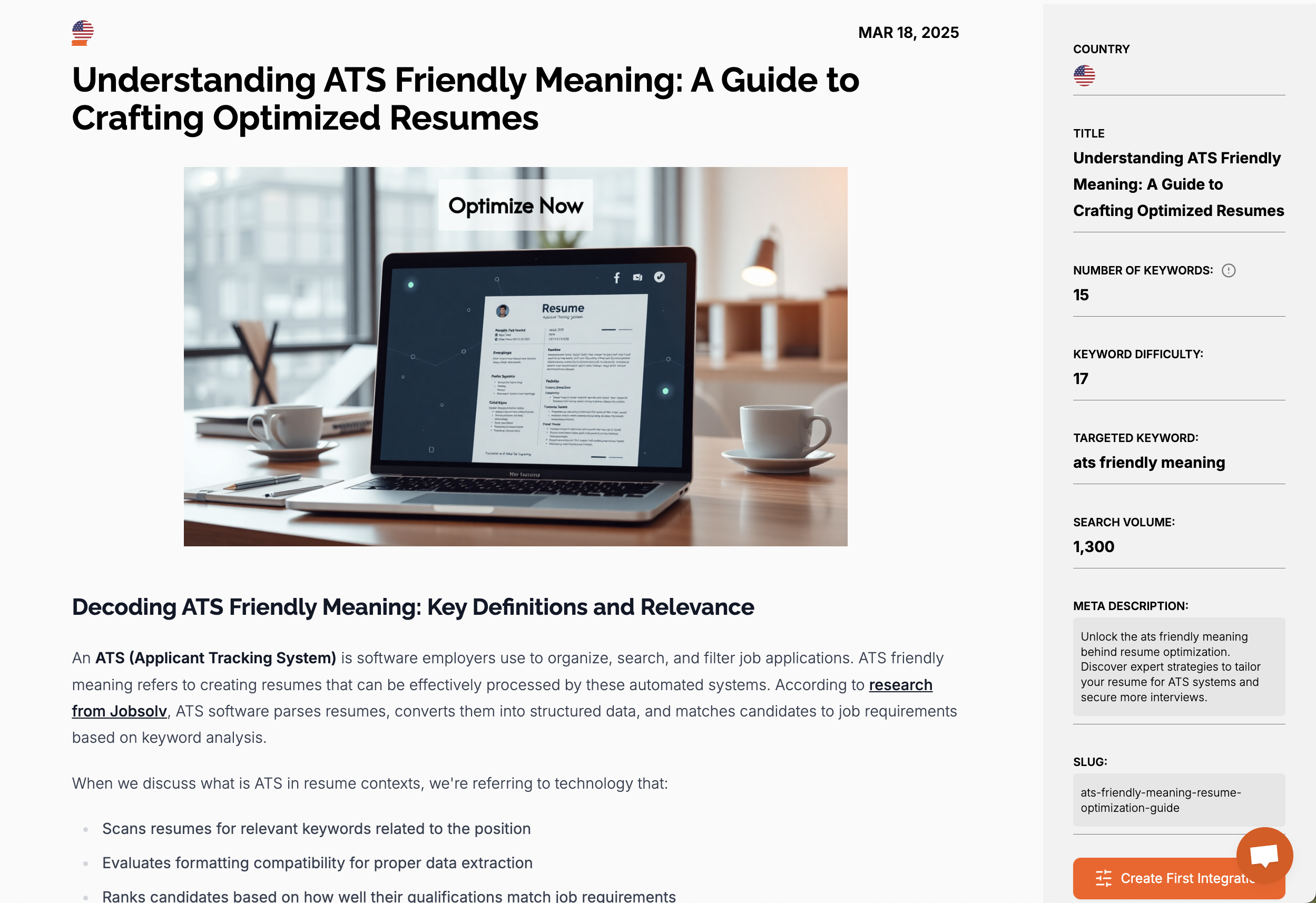
Each article includes:
- Automatically included JSON-LD schema.
- Well-researched content with up-to-date and relevant citations from proven sources
- Expert quotations
- Quantitative data if applicable (statistics, trends, charts, tables).
- Infographics
- SEO optimized elements:
- Meta title that includes the seed keyword.
- Meta description (140-160 words) that includes the seed keyword.
- H1 that features the seed keyword.
- Semantic keywords which are localized
- Slug that consists of the seed keyword and general message.
- FAQ section (sourced from PAA: https://alsoasked.com/).
- Internal links (3-8, topically related).
- Call-to-action (with link and screenshot).
Start ranking on Google and ChatGPT with our 30-day content plan trial: SIGN UP TO FREE TRIAL
<PromoBanner />TESTIMONIAL OF A CUSTOMER
Cyriac Lefort, CEO of Samwell.ai
"For the past 6 months, we've implemented this strategy and the results have been remarkable! Our content now ranks on platforms like ChatGPT and Perplexity, contributing to about 10% of our organic traffic. This is just the beginning! I highly recommend babylovegrowth.ai for anyone looking to optimize their articles for LLMs!"
Ranking on ChatGPT:
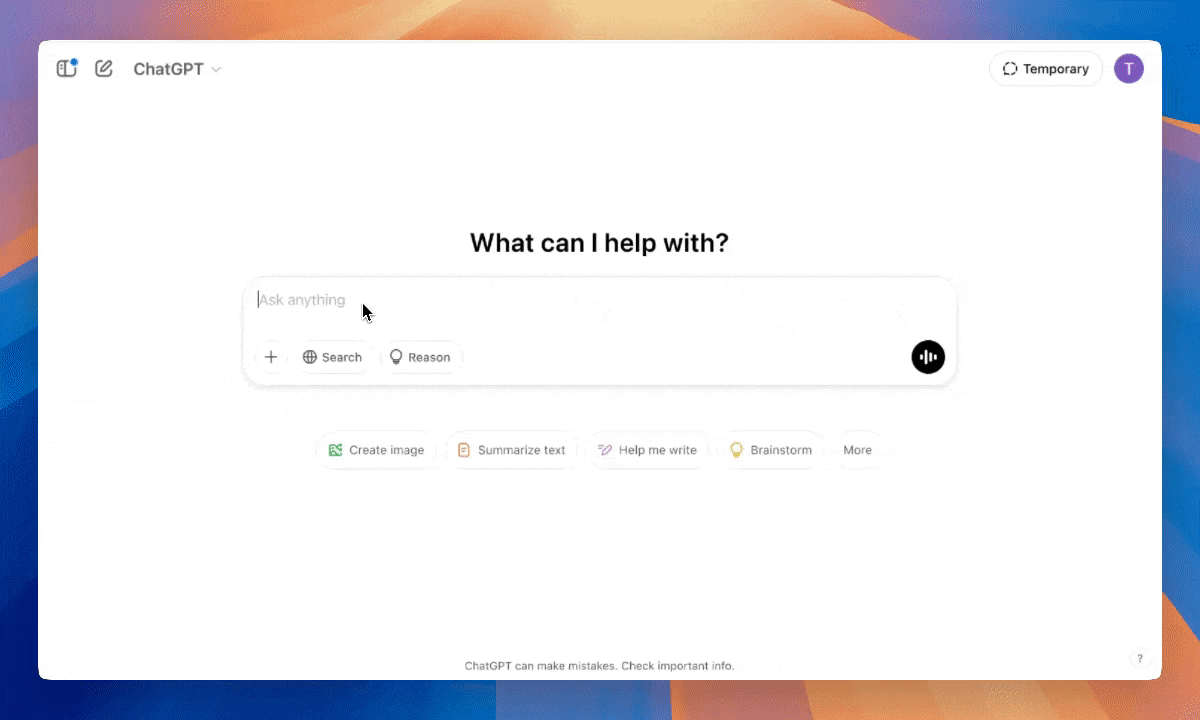
Google Search Console metrics:

By following these strategies, you can improve your content's visibility on Google and LLM-driven searches. Focus on blending these techniques to suit your domain and the intent of the queries your content addresses.
<PromoBanner />
Smart SEO,
Faster Growth!
- Set up in minutes
- Cancel anytime
- AI-powered optimization
Most Read Articles

Generative Engine Optimization (GEO)
Learn how Generative Engine Optimization (GEO) helps your content rank in AI search engines like ChatGPT and Google AI. This comprehensive guide explains the differences between SEO and GEO, why it matters for your business, and practical steps to implement GEO strategies for better visibility in AI-generated responses.
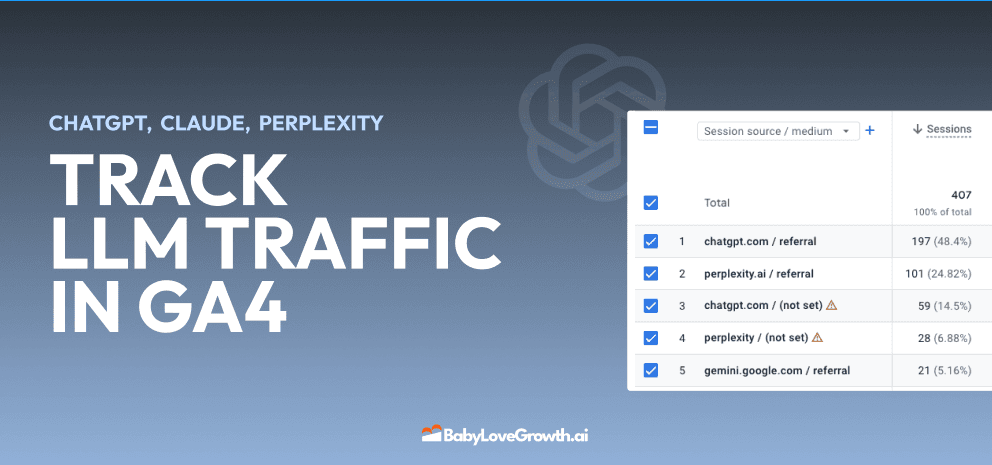
Track LLM Traffic in Google Analytics 4 (GA4)
Learn how to track and analyze traffic from AI sources like ChatGPT, Claude, Perplexity, and Google Gemini in Google Analytics 4. This step-by-step guide shows you how to set up custom filters to monitor AI-driven traffic and make data-driven decisions for your content strategy.

How to Humanize AI Text with Instructions
Learn practical techniques to make AI-generated content sound more natural and human. This guide covers active voice, direct addressing, concise writing, and other proven strategies to transform robotic text into engaging content.
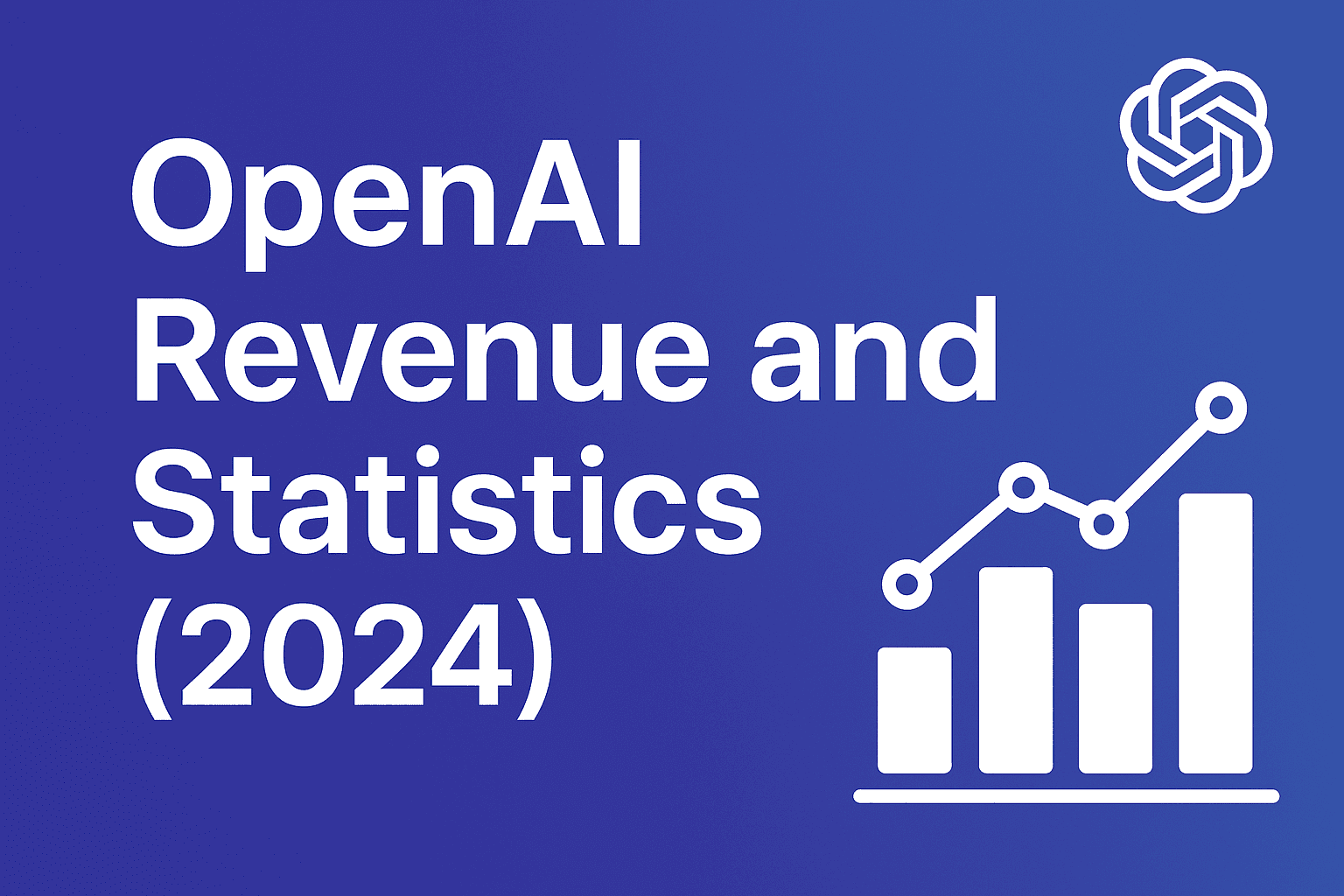
Open AI Revenue and Statistics (2024)
Comprehensive analysis of OpenAI financial performance, user engagement, and market position in 2023. Discover key statistics including $20B valuation, $1B projected revenue, and 100M+ monthly active users.